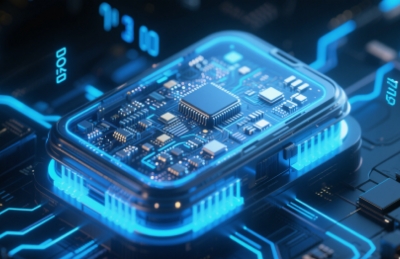In an era where technological advancements occur at an unprecedented pace, artificial intelligence (AI) has emerged as a transformative force, quietly revolutionizing the intricate world of the fundamental building blocks of technology. These minuscule yet powerful components, the unsung heroes of the digital age, are now undergoing a profound metamorphosis, thanks to the integration of AI. This convergence is not merely a passing trend but a paradigm shift that is reshaping the very core of the electronics industry.
At the heart of this transformation lies the design process. Traditionally, crafting these components was a painstaking and time - consuming endeavor, relying heavily on human expertise and trial - and - error. Engineers would spend countless hours fine - tuning designs, often limited by their own cognitive biases and the complexity of the task. However, AI has shattered these barriers. Machine learning algorithms can analyze vast datasets of existing designs, materials, and performance metrics, identifying patterns and correlations that would be impossible for humans to detect. This enables the creation of optimized designs that are not only more efficient but also more innovative. For example, generative design powered by AI can generate thousands of potential component designs in a matter of hours, evaluating each one based on multiple criteria such as size, power consumption, and durability. Engineers can then select the most promising designs and further refine them, significantly reducing the time and cost of the design cycle.

The manufacturing of these components has also been greatly enhanced by AI. In semiconductor fabrication, one of the most critical processes in component production, AI - driven quality control systems are now the norm. These systems use computer vision and machine learning algorithms to inspect wafers and chips at a microscopic level, detecting even the tiniest defects that could compromise the performance of the final product. By catching these issues early in the manufacturing process, companies can reduce waste, improve yield rates, and ultimately deliver higher - quality components to the market. Additionally, AI - enabled predictive maintenance is being used to optimize the operation of manufacturing equipment. By analyzing data from sensors embedded in machinery, AI can predict when a piece of equipment is likely to fail and schedule maintenance before a breakdown occurs, minimizing downtime and increasing production efficiency.
AI is also playing a crucial role in enhancing the functionality of these components. In the field of Internet of Things (IoT), where countless devices are connected and rely on these components for communication and data processing, AI - powered edge computing is becoming increasingly important. Edge devices equipped with intelligent components can perform complex data analysis and decision - making locally, without the need to send all data back to a central server. This not only reduces latency but also conserves bandwidth and ensures the security and privacy of the data. For instance, in smart home devices, AI - enabled sensors can analyze data from various sources such as motion detectors, temperature sensors, and cameras in real - time, making autonomous decisions to adjust the home environment, such as turning on the air conditioner when the temperature rises or sending an alert when an unauthorized person enters the premises.
However, the integration of AI into the world of these components also presents challenges. One of the main concerns is the ethical and security implications. As components become more intelligent, there is a greater risk of them being hacked or misused. Ensuring the security of AI - enabled components requires robust encryption, authentication, and access control mechanisms. Additionally, ethical considerations such as bias in AI algorithms need to be addressed to prevent unfair or discriminatory outcomes.
Looking ahead, the future of these components is closely intertwined with the continued evolution of AI. As AI technologies such as deep learning and neural networks continue to advance, we can expect to see even more sophisticated and intelligent components. These components will not only be smaller, faster, and more energy - efficient but will also be capable of performing complex tasks that were previously unimaginable. The synergy between AI and these components will undoubtedly drive innovation in various industries, from healthcare and transportation to entertainment and beyond, opening up new possibilities and shaping the future of technology as we know it.

